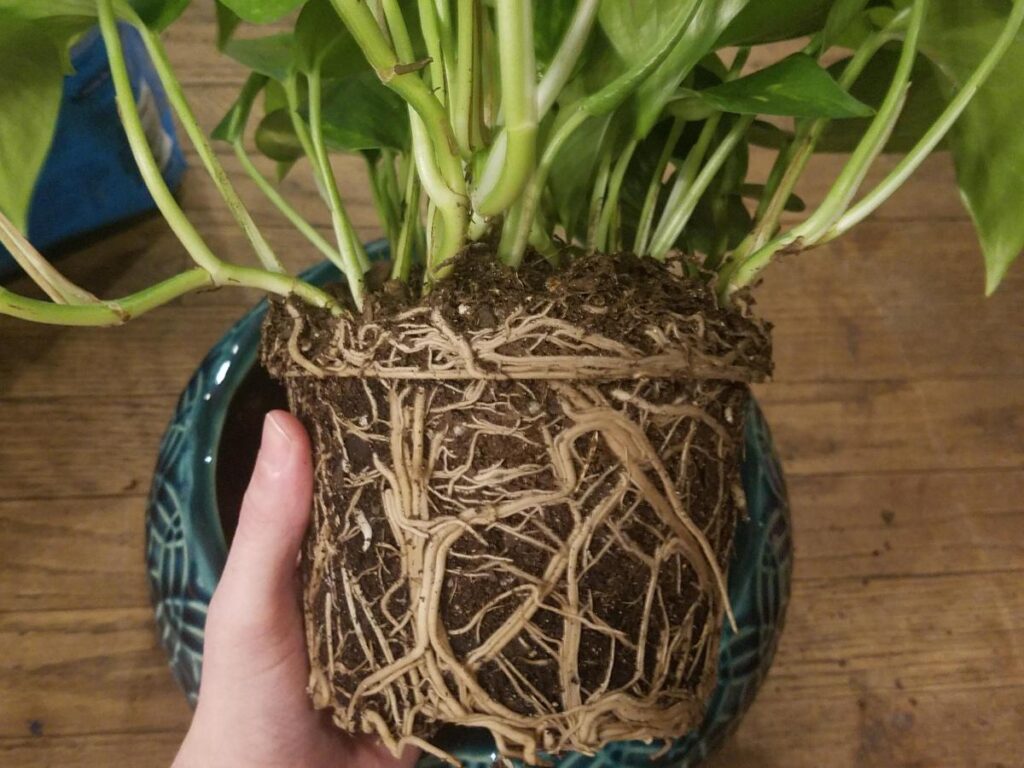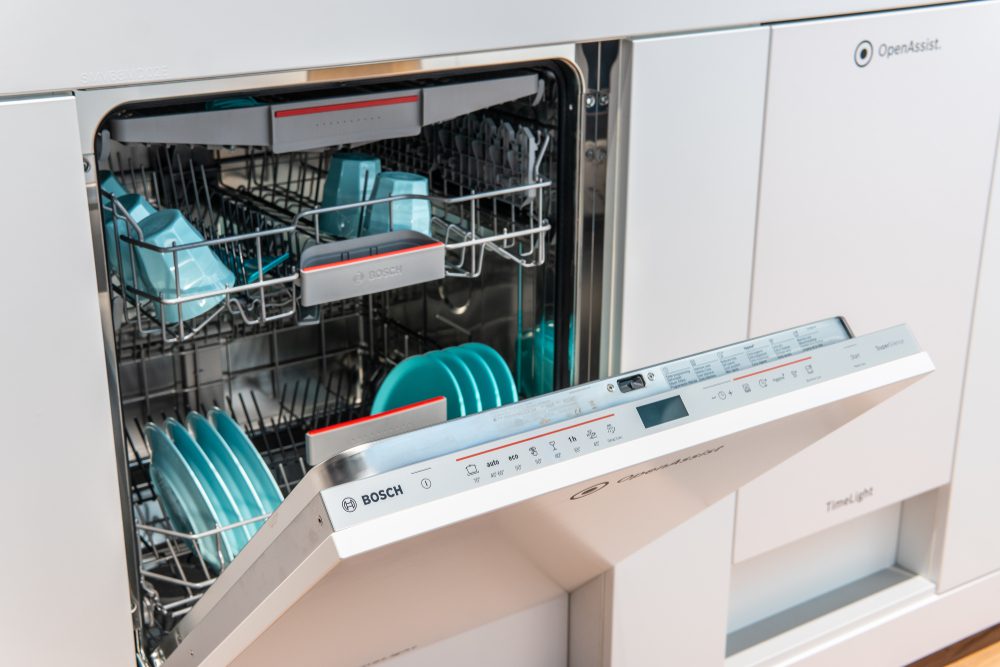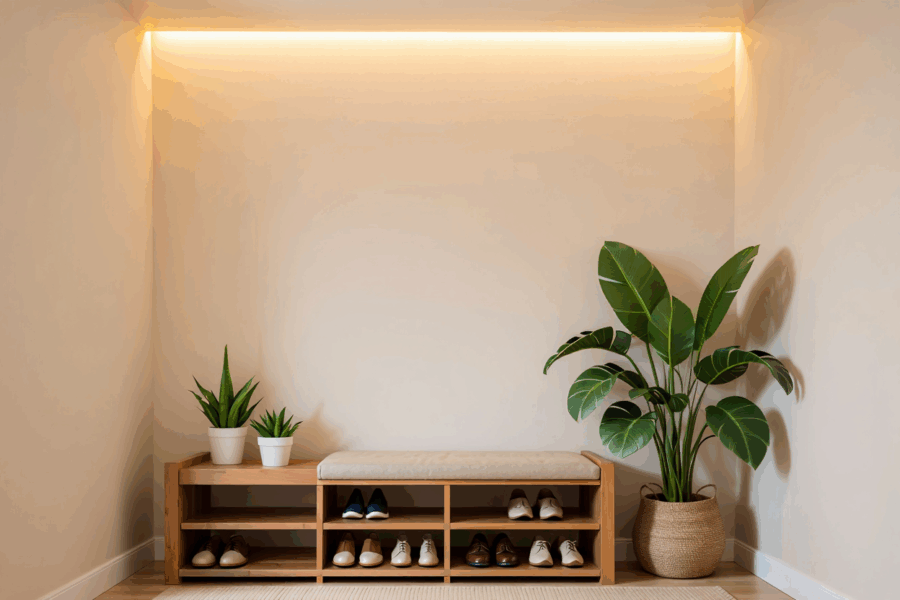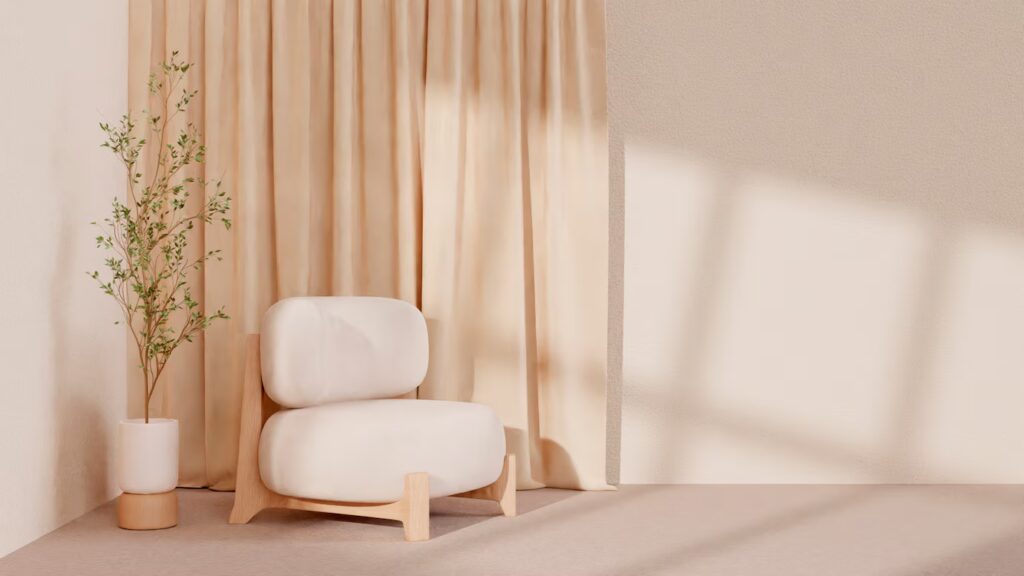If you’re like me, you love your Philodendron Birkin plant. But one thing I’ve always wondered is whether or not these plants like to be root-bound.
It turns out that the answer is a little bit complicated. Here’s what I’ve found out:
Here’s Do Philodendron Birkin Like To Be Root Bound?
Philodendron Birkin plants are generally tolerant of being root bound, but the plant does not enjoy it and should be repotted every few years. This is best done during the spring or summer when it is actively growing. Repotting can be done with minimal harm, making the plant healthier.

What Is the Definition of Root Bound?
Rootbound is a term used to describe when a plant’s roots have become tangled together due to the limited space in its current pot. This typically happens when the plant’s roots have grown enough to fill all the available space in the pot, leaving no room for the plant to continue to grow.
In order to prevent root bound and ensure the health of the plant, it is important to repot it in a larger pot and provide it with adequate space for its roots to grow.
Before repotting or replanting a plant, gardeners should check to see if the roots are too close together. If left untreated, this can hurt the plant’s growth and health.
How Do You Know Your Philodendron Birkin is Root Bound?
Signs that a Birkin is root bound include slower growth, fewer leaves, and/or protruding roots from the soil. You will need to repot it into a larger pot with fresh soil to give the roots room to grow. This will allow your plant to continue to thrive and grow in a healthy manner.
To determine if your Philodendron Birkin is root-bound, you will need to check the roots. Here’s what you can do:
- Gently remove the plant from its pot. You can do this by turning the pot on its side and gently sliding the plant out.
- Examine the roots. If the roots are tightly packed and intertwined, or if they are growing out of the drainage holes in the bottom of the pot, then your plant is likely root bound.
How to Save a Rootbound Philodendron Birkin Plant?
If your Philodendron Birkin plant is rootbound, the best thing you can do is repot it into a larger pot with fresh potting soil. Before repotting, water the plant well to help loosen the soil and make it easier to remove from the pot.
Use a pot that is only slightly larger than the current one, as a pot that is too large can cause the plant to become overwatered.
When repotting, gently loosen the root ball and prune away any damaged or dead roots. Then, place the plant in the new pot and fill in around the root ball with fresh potting soil.
Water the plant well after repotting, and be sure to provide it with the appropriate amount of sunlight and water for its needs.
When Should You Repot a Root-Bound Philodendron Birkin?
It’s best to repot a root-bound Philodendron Birkin plant in the spring to reduce the risk of root rot and keep the plant healthy, or in early summer, when the plant is actively growing. This will allow the plant to quickly adjust to its new pot and potting soil.
Repotting in the fall or winter can be more challenging, as the plant may not have as much energy to put towards establishing itself in its new pot. Also, the shorter days and cooler temperatures of fall and winter can make it harder for a plant to recover from the stress of being moved.
When moving or repotting a Philodendron Birkin plant, it is important to clean the tools before and after each cut. Additionally, if the plant is bushy, it can be divided into several smaller plants when repotting.
How to Repot a Root-Bound Philodendron Birkin Plant?
Repotting is simple but very important for plants, especially a root-bound Philodendron birkin. By following the steps below, you can repot your root-bound Philodendron Birkin plant and provide it with the fresh soil and additional space it needs to continue to grow and thrive.
- Gather your materials. You will need a new, slightly larger pot, fresh potting soil, and a sharp knife or scissors.
- Water the plant well, allowing it to drain thoroughly. This will help to loosen the roots and make them easier to work with.
- Carefully remove the plant from its current pot. Gently squeeze the sides of the pot to loosen the roots, and then carefully lift the plant out by the base of the stem.
- Use a sharp knife or scissors to carefully trim away any encircling or tangled roots. Be sure to remove any roots that are damaged or diseased, as well as any that are excessively long or crowded.
- Place the plant in its new pot, and fill in around the roots with fresh potting soil. Be sure to leave enough space between the soil and the rim of the pot to allow for watering.
- Water the plant well, allowing it to drain thoroughly. This will help to settle the soil and remove any air pockets around the roots.
- Place the plant in a location with bright, indirect light, and keep the soil evenly moist but not waterlogged. Avoid exposing the plant to direct sunlight or extreme temperatures, as this can cause stress and damage.

What Are the Stages of a Rootbound Philodendron Birkin Plant?
Rooted plants, and Philodendron Birkin plants specifically, typically go through the following rootbound stages:
Initial growth:
This is the stage when the plant is first purchased or propagated. It is actively growing and establishing itself in its new environment.
Root bound:
As the plant continues to grow, its roots can become crowded and tangled within the pot, causing the plant to become root-bound. This can cause the plant to become stunted, which may lead to reduced growth and overall health.
Repotting:
When a plant becomes root-bound, it is frequently necessary to repot it in a larger pot so that the roots can grow more freely. This can help the plant recover and resume normal growth.
Continued growth:
After being moved to a new pot, the plant should grow normally and continue to do well. In this stage, it is important to monitor the plant’s watering and fertilizing needs to ensure that it stays healthy and continues to grow properly.
You should check the roots of your Philodendron Birkin plant regularly to ensure that it is not becoming root-bound. If you do notice that the roots are crowded and tangled, it is important to repot the plant as soon as possible to help it recover and continue to grow.
How to Prevent Your Philodendron Birkin from Becoming Too Root-Bound During Potting or Replanting?
If you’ve been potting your philodendrons for years, you may find yourself wondering how to prevent them from becoming root-bound during potting or replanting. Some of the information below will help you figure out how to avoid this problem.
The most common cause of root binding is overwatering. When you water your plants regularly, you encourage the roots to grow outward instead of downward. As these roots grow outward, they eventually become tangled together and form a mass of intertwined roots called a “root ball.”
Root balls restrict air flow and limit plant growth. To prevent this from happening, make sure your soil stays moist but not soggy. Water your plants when the soil feels dry to the touch.
You also need to keep an eye on your pots. Make sure there aren’t any cracks or holes where moisture could escape. If you notice any signs of rot, remove the affected area immediately. Rot can lead to root binding.
Another way to stop root binding is to move your plants to bigger pots when they get big enough. Repotting allows you to move your plants into larger containers without damaging their roots.
Repotting also helps your plants adapt to changes in light levels. If you change how much light your plants get, you’ll need to move them to a new pot to make sure they keep growing well.
Finally, you can prune your plants’ roots to promote healthy growth. Pruning encourages roots to grow upward rather than downward.
What Are the Benefits of Root-Bound Philodendron Birkin Plants?
Root-bound Philodendron birkin plants can have several benefits, such as the fact that the dense root system can help the plant stabilize itself, and they can be less susceptible to drought because the dense root system allows them to access water and nutrients more efficiently.
Additionally, some additional benefits of root-bound Philodendron Birkin plants may include:
Improved growth and development: A root-bound plant can continue to grow and develop even when planted in a pot that is too small because the dense root system allows it to access the available nutrients and water more efficiently.
Increased resilience: Because the roots of a root-bound plant are dense and spread out, it can be better able to handle stresses from the environment, such as extreme temperatures or changes in the amount of water in the soil.
More compact growth: In many cases, a root-bound plant will grow in a more compact and controlled manner, which can be desirable for plants that are grown in pots or containers. This can help the plant maintain a neat and tidy appearance.
Improved blooming: Some plants, including Philodendron birkin, are more likely to produce flowers and fruit when they are root-bound. This can make them more attractive and also increase their value as ornamental plants.
What Is the Difference Between Root-Bound and Non-Root-Bound Philodendron Birkin Plant Care and Maintenance?
One of the main differences is that a root-bound plant may need to be transplanted more frequently than a non-root-bound plant.
Another difference in care and maintenance is that a root-bound plant may require more frequent watering than a non-root-bound plant. Since the roots of a root-bound plant are densely packed and may not be able to absorb water and nutrients as efficiently, the plant may require more frequent watering to ensure that it stays hydrated.
Finally, a root-bound Philodendron Birkin plant may also require more fertilization than a non-root-bound plant, as the densely packed roots may not be able to absorb nutrients as efficiently.
Overall, the care and maintenance of a root-bound Philodendron Birkin plant may require a bit more attention and attention to detail, but with proper care and attention, it can continue to grow and thrive.
Final Thoughts
It is not ideal for Philodendron Birkin plants to be root bound, although they can tolerate it to some extent. Root-bound plants may experience stunted growth, yellowing leaves, and overall poor health.
You should check your Philodendron Birkin’s roots often and, if necessary, move it to a bigger pot. If you give the plant enough room for its roots to grow, it will be healthier and happier.
Remember to use a well-draining potting mix and to water your Philodendron Birkin regularly, but be sure not to over-water as this can lead to root rot.
Overall, by providing your Philodendron Birkin with the proper care and attention, you can help ensure that it stays healthy and thrives for years to come.









